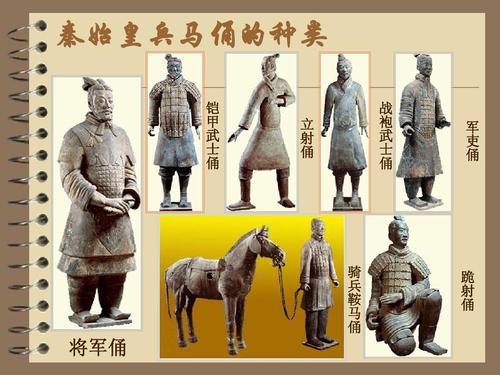
The Terracotta Army: Guardians of an Emperor's Afterlife
Introduction: An Army Frozen in Time
The Terracotta Army is one of the most iconic and awe-inspiring archaeological discoveries of all time. This vast collection of terracotta sculptures depicts the armies of Qin Shi Huang, the first emperor of China. It stands as a testament to the emperor's power, ambition, and belief in the afterlife. Buried with the emperor in 210–209 BCE, the Terracotta Army was meant to protect him in his afterlife and symbolize his power in the next world.
The First Emperor and His Vision: Unifying an Empire, Preparing for Eternity
Qin Shi Huang, originally Ying Zheng, ascended to the throne of the Qin state at the young age of 13. He proved to be a brilliant military strategist and ruthless ruler, conquering the six warring states of China and unifying them under his rule in 221 BCE. He declared himself "Qin Shi Huangdi," meaning "First Emperor of Qin," marking the beginning of the Qin dynasty and imperial China.
Believing himself to be the first to unite China and determined to rule for eternity, Qin Shi Huang began constructing his own mausoleum soon after ascending the throne. He envisioned a vast necropolis that would reflect his earthly power and accompany him into the afterlife, guarded by an army of terracotta warriors.
The Construction of an Army: Clay Warriors for an Eternal Emperor
The construction of the Terracotta Army was a monumental undertaking that spanned decades and involved the labor of thousands of artisans and laborers. The figures were created near the emperor's mausoleum using local clay, showcasing remarkable craftsmanship and attention to detail.
Each soldier and horse was meticulously crafted, with distinct facial features, hairstyles, armor, and weaponry. The figures were originally painted with bright pigments, revealing details like rank, unit affiliation, and even individual personalities, although much of the paint has faded over the centuries.
The army consists of different types of soldiers, each with specific roles and equipment:
- Infantry: The most numerous, these foot soldiers were armed with swords, spears, or crossbows.
- Archers: Kneeling or standing, these figures were equipped with powerful crossbows.
- Chariot Warriors: Riding in bronze chariots drawn by horses, these warriors represented the elite fighting force.
- Cavalry: Mounted on terracotta horses, these figures were armed with spears and swords.
- Generals and Officers: Larger in size and with more elaborate attire, these figures commanded the different units.
The Discovery and Legacy: Unearthing an Ancient Wonder
The Terracotta Army lay hidden beneath the earth for over two millennia until its accidental discovery by farmers digging a well in 1974. The discovery astonished the world and sparked a wave of archaeological investigation.
Today, the Terracotta Army is a UNESCO World Heritage Site and one of the most popular tourist destinations in China. The site continues to be excavated, revealing more secrets about the Qin dynasty and ancient Chinese civilization.
Q&A
1. How many Terracotta Army figures have been discovered?
While thousands of figures have been unearthed, it's estimated that over 8,000 warriors, along with chariots and horses, are buried within the complex.
2. Why were the Terracotta Army figures buried with the emperor?
According to ancient Chinese beliefs, the afterlife mirrored the earthly realm. The Terracotta Army was meant to protect the emperor in the next life and project his power, just as a real army would in his earthly reign.
3. Are the Terracotta Army figures hollow or solid?
The figures are mostly hollow, with the exception of their solid legs, which provide a stable base. This construction technique allowed for faster production and reduced the weight of the figures, making them easier to fire in kilns.